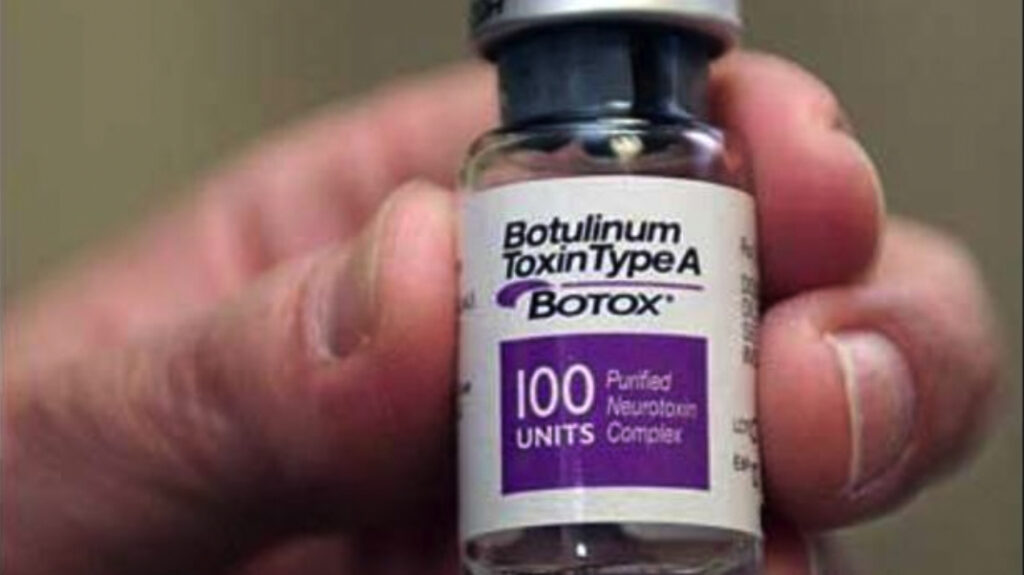Dr. Rashid’Kazerooni, PharmD, MS, BCPS, is a Medical Science Liaison at Merz North America. Dr. Kazerooni is among the first graduates of the’University of Wyoming’s 2016-2018 MSHSA program and we couldn’t more proud of his independent project,’Botulinum Toxin Type A’Overdoses: Analysis of’the’FDA Adverse Event Reporting System Database, being published.
_______________________________________________________________________________________
”Springer’International’Publishing’AG,’part’of’Springer’Nature’2018
Introduction
Published literature on overdoses related to botulinum toxin A (BtxA) agents is scarce.
Objective
The aim of this study was to assess the BtxA drug class’ respective agents for associations with overdose.
Methods
United States Food and Drug Administration (FDA) adverse event reporting system (FAERS) database was utilized to search for overdoses. The analysis was conducted on data between second quarter 2014 and third quarter 2017. BtxA cases were included when they were considered the ‘Primary Suspect’ drug. Overdose was defined as presence of ‘overdose’ being reported as an adverse event. Primary outcome was incidence of ‘overdose’ compared within the respective agents. Additionally, a disproportionality analysis was conducted utilizing reporting odds ratio (ROR) versus onabotulinumtoxinA as a referent while controlling for confounding variables.
The full study is published and can be purchased from Springer International Publishing, click here.
Results
A total of 3,837,406 unique adverse events were reported during the study period for all drugs in the FAERS database. Of which, 13,078 were BtxA cases. The rate of adverse events involving overdose for abobotulinumtoxinA (20.2%; 215/1065) was significantly higher than both onabotulinumtoxinA (0.4%; 48/11,323;’p?<?0.0001) and incobotulinumtoxinA (0.1%; 1/690;’p?<?0.0001). In the regression analysis, abobotulinumtoxinA (ROR 73.26; 95% CI 51.17’104.90) had a significant association with overdose, whereas incobotulinumtoxinA (ROR 0.73; 95% CI 0.10’5.36) did not, versus the referent onabotulinumtoxinA.
Conclusion
The present analysis showed adverse events of abobotulinumtoxinA were significantly associated with overdose versus the other two BtxA agents. Overdose can be difficult to research, particularly for in-clinic administered drugs. Future studies should venture to confirm these results in new and novel ways.
”Springer’International’Publishing’AG,’part’of’Springer’Nature’2018
References:
-
Ubbink DT, Santema TB, Lapid O. Shared decision-making in cosmetic medicine and aesthetic surgery. Aesthet Surg J. 2016;36(1):NP14-9.CrossRefPubMedGoogle Scholar
-
Walker TJ, Dayan SH. Comparison and overview of currently available neurotoxins. J Clin Aesthet Dermatol. 2014;7(2):31’9.PubMedPubMedCentralGoogle Scholar
-
Allergan, Inc. Botox‘‘(onabotulinumtoxinA) prescribing information. 2018.’https://www.allergan.com/assets/pdf/botox_pi.pdf. Accessed 10 Mar 2018.
-
Allergan, Inc. Botox Cosmetic’ (onabotulinumtoxinA) prescribing information. 2018.’https://www.allergan.com/assets/pdf/botox_cosmetic_pi.pdf. Accessed 10 Mar 2018.
-
Ipsen Biopharm Ltd. Dysport‘‘(abobotulinumtoxinA) prescribing information. 2018.’https://www.dysport.com/docs/pdfs/Dysport_Full_Prescribing_Information.pdf. Accessed 10 Mar 2018.
-
Merz North America, Inc. Xeomin‘‘(incobotulinumtoxinA) prescribing information. 2018.’http://www.xeomin.com/wp-content/uploads/xeomin-full-prescribing-information.pdf. Accessed 10 Mar 2018.
-
Rodriguez EM, Staffa JA, Graham DJ. The role of databases in drug postmarketing surveillance. Pharmacoepidemiol Drug Saf. 2001;10:407’10.CrossRefPubMedGoogle Scholar
-
US Food and Drug Administration (FDA). 2018.’http://www.fda.gov/Drugs/GuidanceComplianceRegulatoryInformation/Surveillance/AdverseDrugEffects/default.htm. Accessed 10 Mar 2018.
-
Fadini GP, Sarangdhar M, Avogaro A. Glucagon-like peptide-1 receptor agonists are not associated with retinal adverse events in the FDA adverse event reporting system. BMJ Open Diabetes Res Care. 2018;6(1):e000475.CrossRefPubMedPubMedCentralGoogle Scholar
-
US FDA. FDA adverse event reporting system (FAERS): Latest quarterly data files.’https://www.fda.gov/Drugs/GuidanceComplianceRegulatoryInformation/Surveillance/AdverseDrugEffects/ucm082193.htm. Accessed 10 Mar 2018.
-
MedDRA.’https://www.meddra.org/. Accessed 10 Mar 2018.
-
Sakaeda T, Tamon A, Kadoyama K, Okuno Y. Data mining of the public version of the FDA adverse event reporting system. Int J Med Sci. 2013;10(7):796’803.CrossRefPubMedPubMedCentralGoogle Scholar
-
Bate A, Evans SJ. Quantitative signal detection using spontaneous ADR reporting. Pharmacoepidemiol Drug Saf. 2009;18:427’36.CrossRefPubMedGoogle Scholar
-
Hauben M, Reich L. Drug-induced pancreatitis: lessons in data mining. Br J Clin Pharmacol. 2004;58:560’2′[PMC free article].CrossRefPubMedPubMedCentralGoogle Scholar
-
Almenoff J, Tonning JM, Gould AL, et al. Perspectives on the use of data mining in pharmaco-vigilance. Drug Saf. 2005;28:981’1007.CrossRefPubMedGoogle Scholar
-
Almenoff JS, Pattishall EN, Gibbs TG, et al. Novel statistical tools for monitoring the safety of marketed drugs. Clin Pharmacol Ther. 2007;82:157’66.CrossRefPubMedGoogle Scholar
-
Hauben M, Bate A. Decision support methods for the detection of adverse events in post-marketing data. Drug Discov Today. 2009;14:343’57.CrossRefPubMedGoogle Scholar
-
Humphrey S. Neurotoxins: evidence for prevention. J Drugs Dermatol. 2017;16(6):s87’90.PubMedGoogle Scholar
-
Concato J, Feinstein AR, Holford TR. The risk of determining risk with multivariable models. Ann Intern Med. 1993;118:201’10.CrossRefPubMedGoogle Scholar
-
Benecke R, Jost WH, Kanovsky P, Ruzicka E, Comes G, Grafe S. A new botulinum toxin type A free of complexing proteins for treatment of cervical dystonia. Neurology. 2005;64(11):1949’51.CrossRefPubMedGoogle Scholar
-
Roggenk’mper P, Jost WH, Bihari K, Comes G, Grafe S, NT 201 Blepharospasm Study Team. Efficacy and safety of a new botulinum toxin type A free of complexing proteins in the treatment of blepharospasm. J Neural Transm (Vienna). 2006;113(3):303’12.CrossRefGoogle Scholar
-
Kane MA, Gold MH, Coleman WP 3rd, Jones DH, Tanghetti EA, Alster TS, Rohrer TE, Burgess CM, Shamban AT, Finn E. A Randomized, double-blind trial to investigate the equivalence of incobotulinumtoxinA and onabotulinumtoxinA for glabellar frown lines. Dermatol Surg. 2015;41(11):1310’9.CrossRefPubMedGoogle Scholar
-
Sattler G, Callander MJ, Grablowitz D, Walker T, Bee EK, Rzany B, Flynn TC, Carruthers A. Noninferiority of incobotulinumtoxinA, free from complexing proteins, compared with another botulinum toxin type A in the treatment of glabellar frown lines. Dermatol Surg. 2010;36(Suppl 4):2146’54.CrossRefPubMedGoogle Scholar
-
N’ssgens Z, Roggenk’mper P. Comparison of two botulinum-toxin preparations in the treatment of essential blepharospasm. Graefes Arch Clin Exp Ophthalmol. 1997;235:197’9.CrossRefPubMedGoogle Scholar
-
Bentivoglio AR, Fasano A, Ialongo T, Soleti F, Lo Fermo S, Albanese A. Outcome predictors, efficacy and safety of Botox and Dysport in the long-term treatment of hemifacial spasm. Eur J Neurol. 2009;16(3):392’8.CrossRefPubMedGoogle Scholar
-
Kerscher M, Roll S, Becker A, Wigger-Alberti W. Comparison of the spread of three botulinum toxin type A preparations. Arch Dermatol Res. 2012;304(2):155’61.CrossRefPubMedGoogle Scholar
-
Weber J. Epidemiology of adverse reactions to nonsteroidal anti-inflammatory drugs. Adv Inflamm Res. 1984;6:1’7.Google Scholar
-
Hoffman KB, Dimbil M, Erdman CB, Tatonetti NP, Overstreet BM. The Weber effect and the United States Food and Drug Administration’s Adverse Event Reporting System (FAERS): analysis of sixty-two drugs approved from 2006 to 2010. Drug Saf. 2014;37:283’94.CrossRefPubMedPubMedCentralGoogle Scholar
-
Rothman KJ, Lanes S, Sacks ST. The reporting odds ratio and its advantages over the proportional reporting ratio. Pharmacoepidemiol Drug Saf. 2004;13:519’23.CrossRefPubMedGoogle Scholar
-
Allergan press release. 2018.’https://www.allergan.com/news/news/thomson-reuters/allergan-reports-solid-finish-to-2017. Accessed 5 Jun 2018.
-
US FDA. FDA adverse event reporting system (FAERS) public dashboard.’https://www.fda.gov/Drugs/GuidanceComplianceRegulatoryInformation/Surveillance/AdverseDrugEffects/ucm070093.htm. Accessed 10 Mar 2018.

